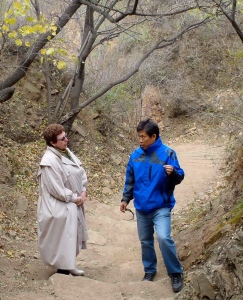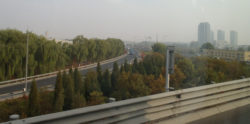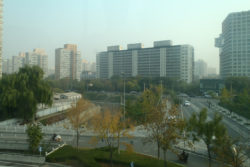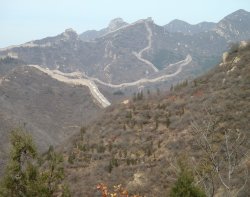Article by Ruth Henderson, Hibiscus Coast branch’s delegate for the 2011 Prominent Persons and Leaders Delegation.
A highlight of the 2011 NZCFS Prominent Person’s Delegation for a horticulturist or anyone interested in ecology and climate change had to be our visit with the very enthusiastic Chen Junqi.

He is the Deputy Director of both the Beijing Forestry Carbon Administration and the Beijing Forestry and Park Department based at Badaling Forestry Centre, ‘next door’ to the Great Wall of China.
The transformation over sixty years from a nearly denuded landscape to parks and forests where hundreds of thousands of people go for recreation each weekend is laudable, as is the greening of Beijing itself.
What did they start from and how have they achieved this?
Beijing Municipality climate:
Beijing Municipality has a semi-humid, continental monsoon climate with an average of 585mm of rainfall per annum. It has a conifer and mixed broadleaf forest (pine, cypress, oaks, poplar, walnut, elm, maple). Terrain is two thirds mountainous with an elevation going from 20 to 1500m, with its highest peak 2303m.
Forest Cover:
Historically Beijing was densely forested, but for 2000 years, wars, firewood collection, sandstorms, soil erosion, mountain landslides and city construction had taken their toll.
In 1950, forest cover was only 1.3% of the area.
In 2010, this had increased dramatically to 37% with 1.05 million hectares in forest: the mountains now having 46% forest cover and the plains 19%.
Green corridors – the creation of these became a priority:


In urban areas, plantings were made along roadsides, river banks, urban parks and garden-like residential areas were developed.
On the plains, in the seven years between 2001 and 2008, 1,035 km of corridors were planted alongside rivers, roads, motorways, centre strips and ring roads. Shelter belts were planted on farmlands, along pathways and beside villages. Wind breaks helped cut off the desert sand allowing leaf litter (mulch) to build up.

In the mountains, the green shelter system and colour-leaf forestation projects expanded involving individuals and nations. Since 1981, 156 million trees have been planted by volunteers with an 88% survival rate.
Each year, there is a national tree planting day on 12th March.
Forest industry offshoots
Farmers have been given compensation to plant forests – with 600RMB per acre incentive compared with 40-60RMB they might gain per acre from crops. Under the canopy of the forest, industry has flourished with mushrooms, chickens, medicinal plants being grown.
Encouragement is given to those in the fruit tree, flower, nursery stock, apiculture and forest tourism industries.
Programmes on fire prevention, pest and disease control, and the protection of wild fauna and flora are run.

Forest Tourism:
In the Beijing municipality, eco-tourism is the fastest growing industry involving 10 million people per year. Information centres, cycle trails, walking tracks for young to old people have been developed. Hundreds of thousands of people come from Beijing city for a day trip to the forest. Overnight stays are allowed except in the fire season which is November to May, their dry season.
International co-operation:
There is co-operation with 23 countries and participation in 25 international projects within the main fields of landscape architecture and forestry. These are bio-diversity, sustainable development, climate change, forest culture and experience, promotion of the fruit and flower industry and encouraging low carbon garden communities.
Publicity network:
100 million people are targeted by the written media, public organisations, parks, schools and the following websites:
- www.oclife.cn
- http://bfca.bjyl.gov.cn with 535 million website hits!
- www.bfdic.com
If you wish to download a pdf of this article, click HERE
– Ruth E. Henderson (Kawau Island, North Auckland)




